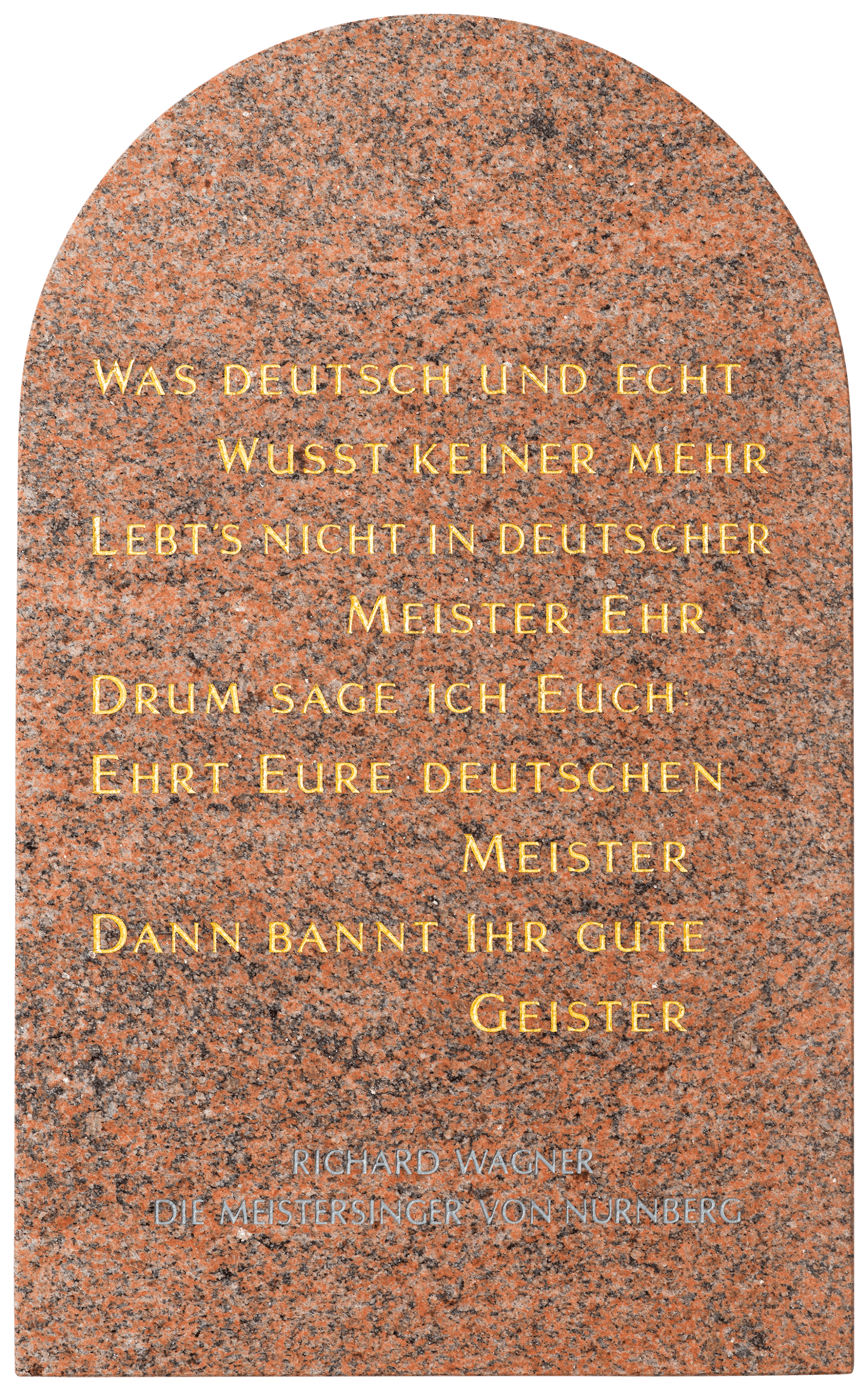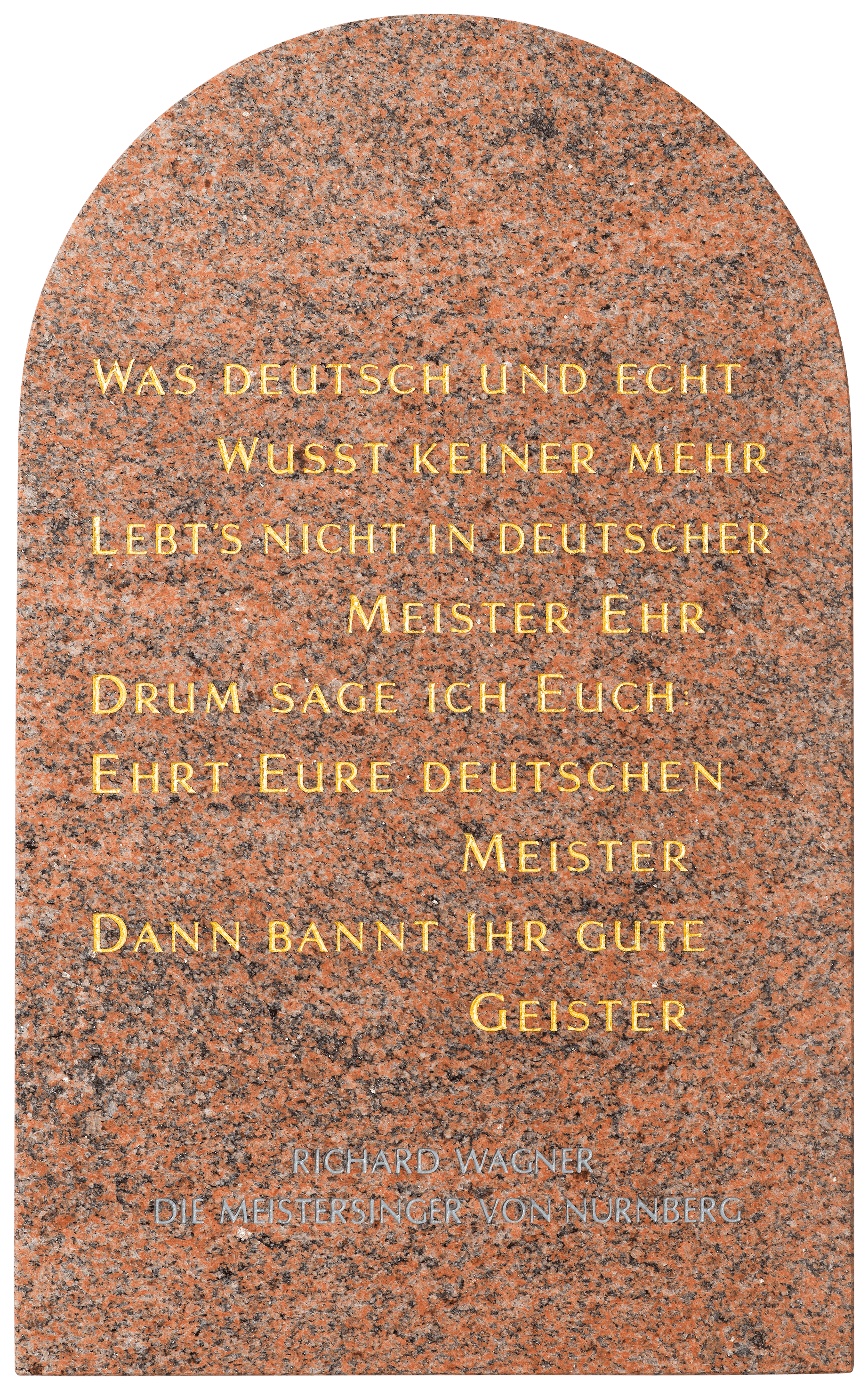

Inscription on the Graz Opera House (Reproduction)
Graz, Nuremberg of the South
In 1897, when mayor Franz Graf took office, the decision for the construction of a new city theatre was taken. The city government’s cultural political driving force for this was clear: It was intended to become a German National sanctuary of the Wagner cult. In Graz, there was great enthusiasm for Richard Wagner, the leading figure of German-language cultural bourgeoisie. The marble plate on the backside of the present-day Graz Opera House bears witness to this with Hans Sachs’ verses from the opera “Die Meistersinger von Nürnberg“.
Granite Multicolor with leaf Gold
81,5 × 50,2 × 3 cm (scale of 1 : 2)
Lender: GrazMuseum (commissioned work 2016)
Graz Museum / Photo: Arno Friebes
“The Most German City of the Monarchy”
The new opera house was part of a series of new buildings in Graz in the neo-Gothic or “Old German” style, including the Regional Court (1889–1894) and the extension of Graz City Hall (1893–1894). The construction projects were part of a cultural-political campaign to establish a “metropolitan" and “German” reputation. Graz was to catch up with the leading cities of culture in the German-speaking world.
Municipal politics also inscribed its German National orientation in the public sphere through street names. Friedrich Ludwig Jahn (1870), Richard Wagner (1899) and Theodor Körner (1899) acted as "Great German heroes" and namesakes. Graz was perceived as “the most German city of the monarchy”, as noted in a Brockhaus publication from the second half of the 19th century.